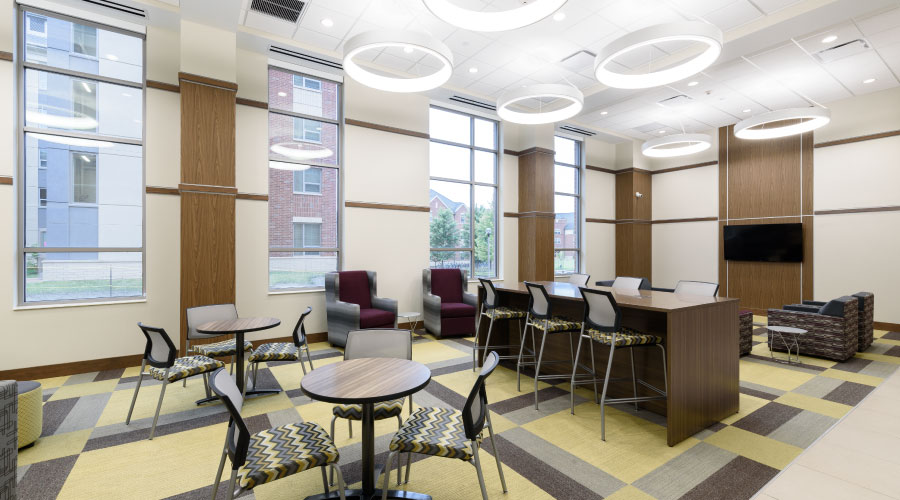LEDs: Beware of Performance Characteristics
LED products also offer performance characteristics managers need to be aware of before making specification decisions.
Many LED manufacturers are producing fixtures with very cool, blue-ish color temperatures to maximize the fixture's efficiency. Cool-color-temperature LEDs are more efficient than warm colors. These products will provide a stark — and likely unwelcome — contrast in buildings that have featured CFL or incandescent fixtures. Similarly, in an exterior environment, excessively cool-color LEDs have provoked negative reactions from the general public in pilot installations.
Some fixtures have clusters of individual LEDs that are visible by looking at the fixture's face. Other manufacturers use a remote phosphor lens, which hides the LEDs and creates a more incandescent look.
Individual LEDs can be more efficient, but they also will create multiple shadows. This issue might not matter much in a circulation space or for lighting a cluster of objects, but on a white wall or in a work area, it could be distracting or even harmful.
The growing demand for LEDs is creating potential problems for unaware specifiers. Some manufacturers are putting LEDs into products originally designed for another light source to get a product to the market quickly. These products are generally sub-par performers and will disappoint.
Brightness issues also can cause problems. The directionality of LEDs means they can deliver very low brightness when viewed from some directions but excessive brightness when viewed from an opposite direction. In site-lighting situations where visitors view fixtures in a 360-degree rotation, this change in brightness can be distracting.
Finally, organic LEDs (OLEDs) are flat, thin panels of light. They are in early development stages but hold the promise of thin sheets of light managers can integrate into building materials in ways not possible in the past. As their color quality and efficiency improve and price decreases, managers will start to see them in specialty applications, such as backlighting translucent materials. But over time, they also could mature into instruments for general illumination.
The moral of the LED story is, buyer beware. Managers must do the necessary homework before specifying or purchasing LED products. LEDs have the potential to improve lighting quality and functionality in specific applications, reduce energy, and lower the cost of maintenance. But these benefits are not guaranteed.
Denise Fong, IALD, LEED AP is principal of Candela, a lighting consulting and design firm headquartered in Seattle. She has more than 25 years of developing award-winning lighting designs in the built environment.
Related Topics:













